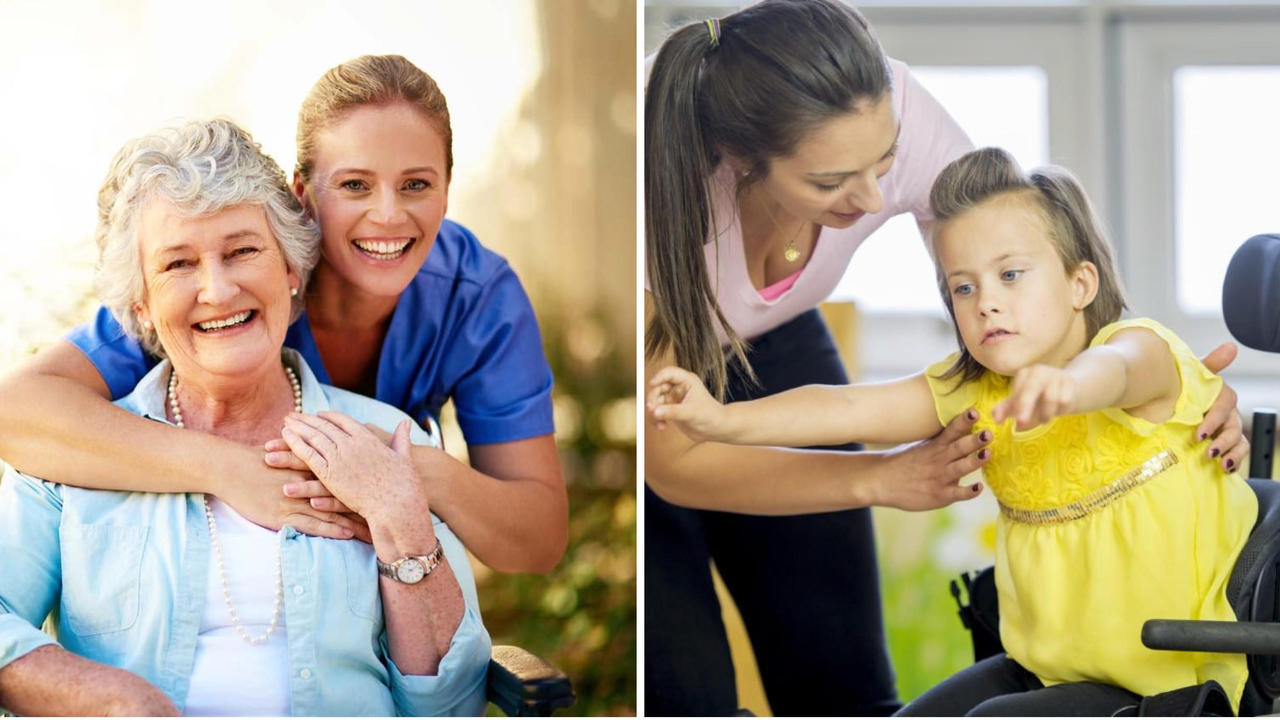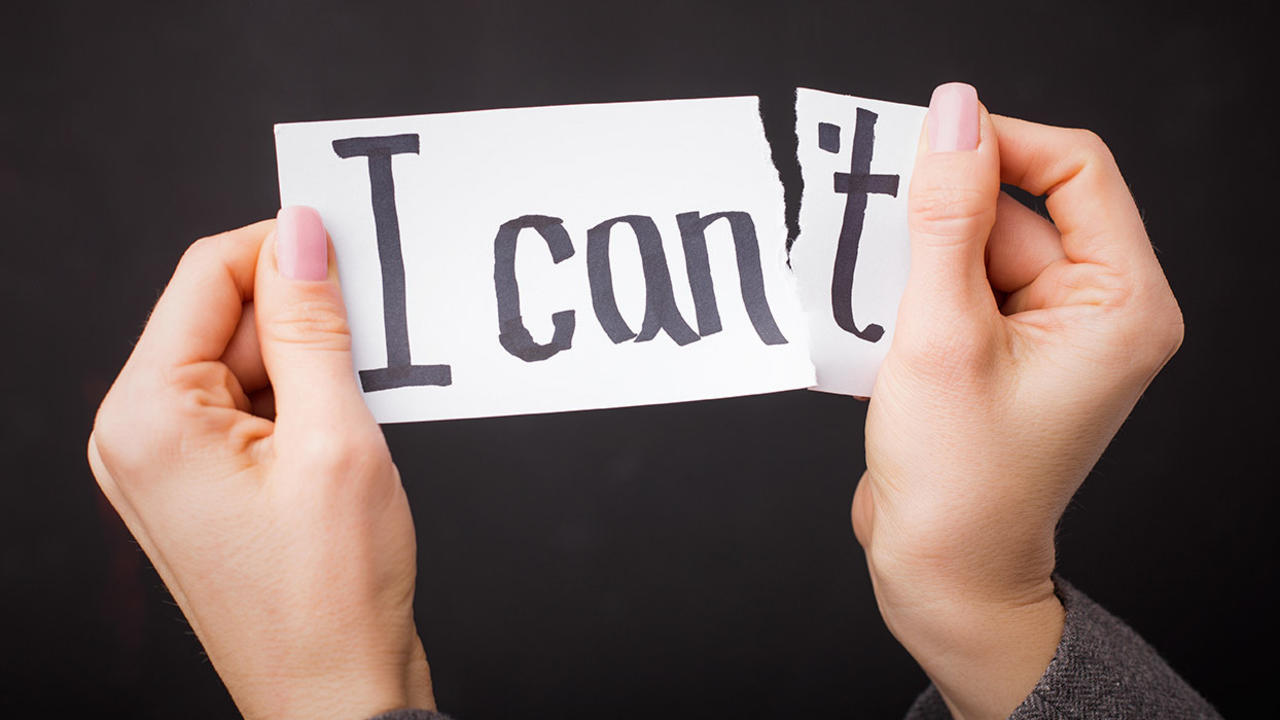How To Experience The Gift Of Caregiving
My father lived to see his 100th birthday in 2017. It was a huge celebration.
On that day, it seemed he would live forever. So when that didn’t happen 8 months later, I was completely unprepared, even though he was in his 101st year.
My father knew well the importance of family and he instilled those values in me. So, we naturally did whatever we could to ensure his twilight years were fulfilling and comfortable despite shouldering the huge responsibilities of Ben’s continual care and development.
His passing was a reckoning of sorts, that being given the role of a family caregiver is really a tremendous gift. Here are the 4 lessons that came out of that soul searching.
1 - Be Truly Present In All That You Do, So You Can Be Ready For The Unexpected:
Being present means to be attentive and focused on what’s in front of you. I always had a thousand thoughts floating through my mind that had nothing to do with the task at hand. Those times we had dinner together, I didn’t always appreciat...
When Your Caregiver Quits
If you have a caregiver in your life – I mean someone you've hired, not a family member – then you know how good it feels to have that person around to support you, even if it's only for a few hours a day.
You don't want to lose that. But eventually they're gonna quit and there's nothing you can do about that. So what do you do?
It's happened to us on a few occasions and a couple of times we were just blindsided by the news. The first one was about ten years ago.
I was sitting in the evening and the phone rang, and the phone rarely rings in our house. And it was Lisa, Ben's caregiver, so I picked up the phone.
I said, “Hello.”
“Hello, Mike? This is John.” Now, John is Lisa's husband.
“I just want to tell you that, that she's worked her last day with you after all the things you've done to her and how poorly you've treated her.”
“I'm just calling to say that, that she's never coming back!”
So I'm sitting there thinking … “okay, I've never really met John but what is he trying to...
Here’s what having a great caregiver feels like ...

“There’s nothing anyone can do to help you!”
That was more or less the message we were given when Ben arrived in our lives, having been born with severe, complex disabilities.
No one actually said those words, of course, but that was what we were left with at almost every turn.
The conversations were mainly focused on all of Ben’s “problems” and how there really wasn’t a fix to those problems.
It was easy to get caught up in all that negativity, to believe that’s all there was. For a long time, we had no idea what path to follow, or if a path existed at all.
With so few giving us much hope, we relied on brute force to get things done and help Ben succeed.
After a few years of that exhausting pace, where it was just me and Jan against the world, so-to-speak, we realized we needed help. We couldn’t do this all our own.
It wasn’t good for our health.
It wasn’t good for our relationship.
And our kids were certainly not getting the best of their Mom and Dad.
Bringing in a great ca...
“Catch them doing something right early and often” – Caregiver Leadership 101

So you’ve just hired a caregiver ...
Or maybe you've had someone for a while ...
Or you know someone who relies on a caregiver ...
How do you keep them bringing their best?
Well, consider this obvious fact. Everyone loves to be praised and told they’re doing a good job.
I think that goes without saying.
Some of us might feel a bit uncomfortable when we get a compliment, not really knowing the right thing to say. But we love receiving them, nonetheless.
The problem is that many employers are not really good at giving compliments and pointing out when things go right. And don't forget, you (or your friend) is an employer in this situation.
The tendency is to expect that people will do a good job which means you wind up ignoring those things and focus only on the gaps in their work performance.
Help People Win!
If you’ve ever read any of Ken Blanchard’s writings, you’ll know what I’m talking about.
One of his books is rather brilliant. It’s called, Helping People Win at Work. A...
How do you maintain a balanced relationship with your caregiver?

“Hey, Gladys! Get me a beer!”
A friend asked me what would I do if someone in my extended family – let’s call him Uncle Ralph – talked that way to Ben’s caregiver, Gladys.
I was stumped for a moment, since that has never happened.
But it was a good question and highlighted the importance of knowing where the line should be drawn between keeping the relationship with your caregiver friendly but also professional.
Of course, “get me a beer” is way offside regardless of where that line might be.
An Employee
So, first things first. At the end of the day, you need to remember that Gladys is an employee of yours even if you’re not directly responsible for paying her.
This sets up the dynamic of an employer/employee relationship as well as the responsibilities and respectful behaviours that go along with it.
Hopefully, it’s a wonderful relationship where Gladys loves her job, she actually DOES a wonderful job, and your child or loved one enjoys being with her.
When it’s working well,...
WARNING: The Dangers of NOT Hiring a Caregiver

When Jan and I were thrust into Ben’s world of 24-hour care with no preparation and, of course, no training, we struggled a lot … which really isn’t surprising.
We were off-balance nearly all the time and had little confidence on what to do next.
Strangely, we thought we were the exception. An outlier. So different from the rest of the world.
After all, people weren’t lining up at our door to help us figure things out. We were pretty much left on our own.
When it came to providing round-the-clock care, it all fell to us. And I would say, that’s probably how we wanted it.
He was our son, after all. Our responsibility. It was up to us to provide the care needed.
But as Ben got older, his level of care remained high. Needless to say, that just goes with the territory in the world of disabilities.
It took us a long time to figure out that we couldn’t do this on our own (or maybe it took me a long time).
A Worldwide Issue
What we didn’t realize was that every day, in just about eve...
The top 6 reasons why we accept the human cost of caregiving … but shouldn’t!

The statistics1 are staggering when it comes to unpaid, family caregivers. Whether it’s providing care to your child with a disability, your aging parent, or some other loved one, the numbers are mind-numbing.
Here’s the deal:
- 43% say their loved one’s health is more important than their own.
- 49% experience feelings of depression.
- 51% don’t have time to exercise.
- 70% feel tired most of the time.
On top of that, unpaid family caregivers in the U.S. give up $3 trillion (that’s 12 zeroes) per year in wages, pensions and other benefits.2
The scary thing about this is we fell into most of these categories when Ben was young.
We did everything ourselves. 24/7. 365 days/yr.
We didn’t ask for help. We were his parents. His care was our responsibility.
Whenever it was suggested that we should bring in a caregiver to help, we had a million reasons why that wouldn’t work.
- We couldn’t afford to pay anyone. Things were extremely tight financially, every day, and Ben’s world was unb ...
The downside of hiring a Caregiver

Weird headline, I know, especially coming from me ... when every blog post I’ve published on caregiving has been upbeat and positive about why you absolutely need to bring a great caregiver into your life.
And how this is the key to creating more balance, energy and freedom in your life.
I mean, we even created a best-in-class training program on how to find, hire, and train a great caregiver and nurture a wonderful relationship with them. (Learn more about The Caregiver Support Formula).
So why would I focus on the downside to all of this?
Well, with just about everything in life, there are trade-offs. There is a cost and price related to everything that we do and every decision we make.
The question becomes, is bringing a caregiver into your life worth your time and energy?
Here’s a hint: the answer is a resounding YES!
But you need to be prepared, to understand these “costs” (and I don’t mean monetary), and what you’ll be sacrificing.
Here’s a view to what I mean.
First, is...
How did I miss the anxiety that my child was feeling?

Having a caregiver in our home brings a certain dynamic to our lives and Ben’s life. Some of it’s good. Some not so good.
One of the things we’ve learned is to “pick our battles” since everyone comes with strengths and weaknesses … and baggage.
It’s a balance. As long as Ben’s caregivers are focused on him and treat him well, that’s really the only criteria. We can live with just about anything else that comes with it.
One of Ben’s caregivers – let’s call her Savannah – had been with us for about 7 years. That’s a long time in “caregiver years”.
Savannah’s greatest strength was her reliability. She always stepped in to fill the gap when other caregivers didn’t work out or quit without notice. And she was willing to do consecutive overnight shifts – a big plus if we ever wanted to get away for a few days.
But she often strolled in late for her shifts, and she couldn’t help but be sarcastic with much of what she said.
We also knew that she would sometimes nod in agreement if we nee...
What does freedom really look like?

Earlier today, a friend of mine posted on his Facebook page, “Cruise booked!”
I scoffed and rolled my eyes. The only way that would ever happen in my life would be if all the planets and stars aligned.
First, we’d need to book caregivers to cover each day we were away, and that means 24 hours per day, along with a backup plan if one of them couldn’t keep their shift or we got delayed coming home.
Second, we’d need Ben to be healthy leading up to our departure. No seizures. No strange behaviour. Obviously, it would be impossible to predict any of that months in advance.
Third, we’d need a way to get home quickly in an emergency. Floating on the open waters would make cruising just about impossible.
And last but not least, we’d have to be able to afford it. Or rather, is a cruise where we want to spend our money and do we want it bad enough to go through all this prep work?
I have to be honest. My first reaction to reading about his upcoming cruise was one of envy and anger. I know...

